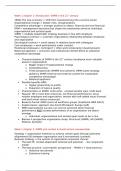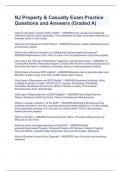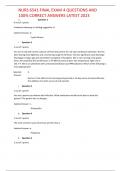Summary
SHORT Summary Strategic Human Resource Management 2e - Strategic Human Resource Management (MAN-BCU008A)
- Course
- Institution
- Book
Shortest summary I was able to make of the total material. With this short stomp summary, I achieved a 7.5. NOTE: to understand the material, this summary is too short, it is really for learning.
[Show more]













